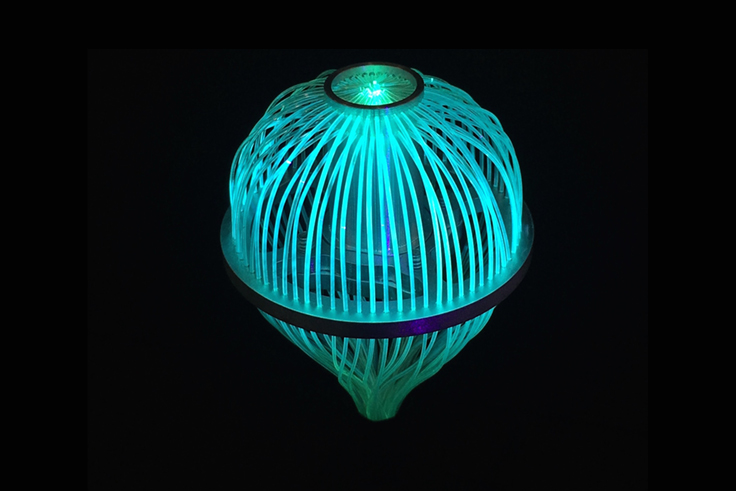The Connectivity Lab at Facebook has developed a new kind of optical detector for FSO communication. Their Luminescent Detector is designed to enable high-speed communication in places where it is a challenge to build more traditional equipment and infrastructure. Semiconductor photodiodes are generally used as detectors for FSO communication; however, there are a few disadvantages that causes them to be less than ideal in some instances. Photodiodes can maintain higher data rates (over 1 gigabit per second) if their surface areas are kept around 1 mm2 or less. The lasers used for FSO communication have a beam diameter that increases as they travel through space which can easily be wider than 1 mm at an extended range causing the distance between the transmitters and the photodiodes to be limited. Optical lenses can be added to the system to focus the beam but this greatly adds to the complexity and cost of the system.
The luminescent detector was developed to address the challenges presented by using semiconductor photodiodes as receivers for FSO communication. This new detector was designed to have both a large active area and FOV without limiting the data rate. Luminescence is the process where a material absorbs light of a particular wavelength and then reemits it at a different wavelength. That is exactly how the luminescent detector achieves its goals. It is constructed from a bundle of optical fibers that absorb transmitted blue light where the device has its largest surface area (~126 cm2 ). The fibers then emit a focused green light (0.2 cm2 ) onto a photodiode. This process happens almost instantaneously so signal delay is kept to a minimum and is only affected by the absorption and remission properties of the fiber. The connectivity lab achieved a data rate in excess of 2Gbps using the luminescent detector seen in Fig. 1.
Prototypes of this device are currently under development to further study its effectiveness in real-world environments. If these tests prove fruitful then luminescent detectors could be used as a low-cost alternative to traditional FSO receivers while being deployed in locations considered too remote for current technologies and infrastructure. This device could potentially be used for indoor visible light communication, a new technology for high-speed data rate transfer in businesses and homes. [1] [2]
Related Links


